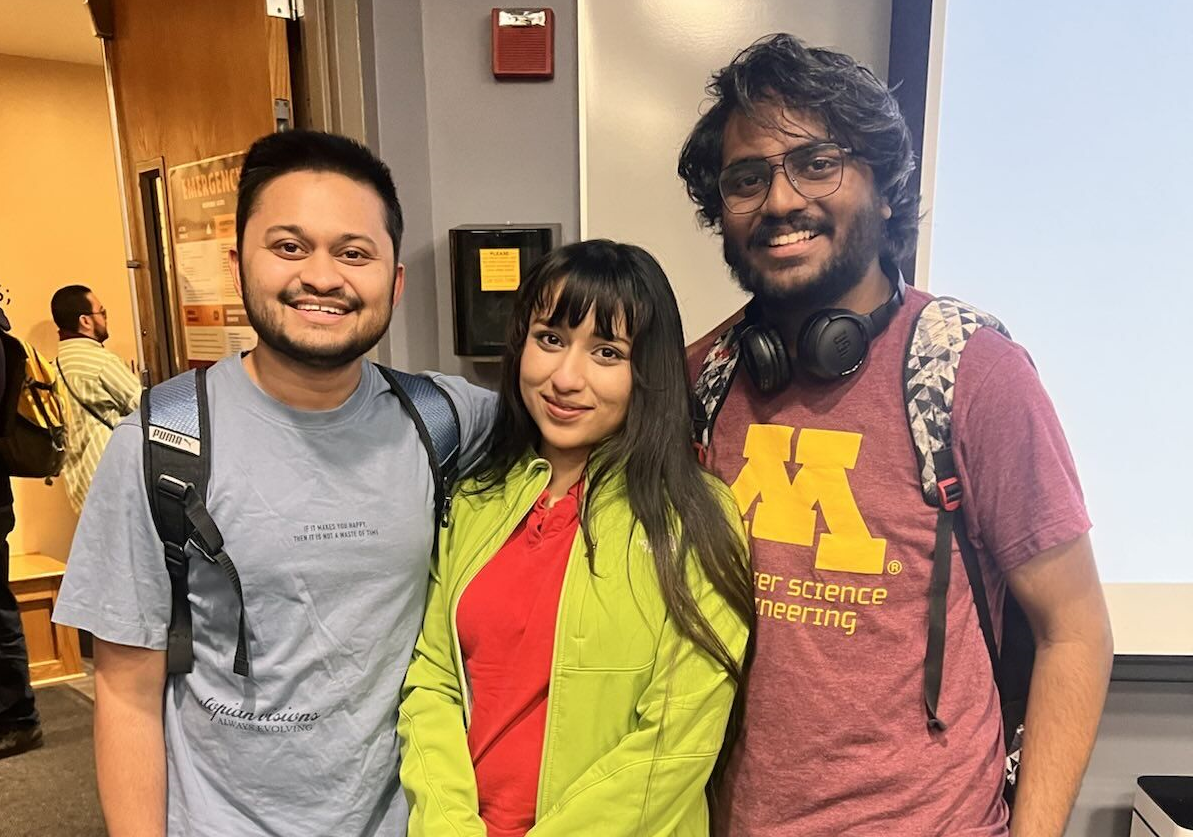Minnesota hackathon winners design journalism tool that aggregates personalized local news stories
MinneDigest makes local news more accessible by using AI tools to provide personalized, concise and easy-to-digest news summaries.

MinneDigest, an AI-powered platform that delivers concise, personalized, and accessible local news summaries, is the winning project of the AI + Local News Hackathon held at the Minnesota Journalism Center. Team members Dipan Bag, Erina Karati and Arunachalam Manikandan, all graduate students in the Computer Science department at the University of Minnesota, Twin Cities, received a $10,000 grant to continue refining their prototype.
Presented by Hacks/Hackers, the Minnesota Journalism Center, The Poynter Institute, Trusting News and the MacArthur Foundation, the January 30–February 1 hackathon brought together data scientists and journalists together for two days to use emerging technologies to build tools that "make local news more accessible."
The MinneDigest team says they will use the $10,000 grant to add new features, boost user engagement, and collaborate with Minnesota news outlets to bring civic information to the community more effectively.
Hacks/Hackers: Can you tell us about your hackathon project?
MinneDigest: MinneDigest is an AI-powered platform that delivers concise, personalized, and accessible local news summaries. It helps users stay informed by summarizing news articles, government updates, and civic reports into short text or audio-based news clips. We use AI models like ChatGPT, Claude and Perplexity, along with cloud services including AWS and GCP to ensure accuracy and relevance.
While non-technical journalists can use MinneDigest, building it required software skills in AI, NLP, backend development (FastAPI, Firebase), and frontend design (React, TailwindCSS). The hackathon team brought machine learning, data engineering and full-stack development expertise to create the prototype.
Why is making local civic information more accessible so important?
Strengthening the local information ecosystem through journalism is essential for fostering informed communities, civic engagement, and public trust. Local news provides critical updates on policies, governance, and issues that directly impact residents, yet many traditional outlets face declining readership and financial challenges. Without accessible and engaging news formats, important stories often go unnoticed, leading to lower civic participation and misinformation.
A strong local information ecosystem ensures that communities stay informed, decisions are made based on reliable sources, and trust in journalism is reinforced, ultimately contributing to a more engaged and knowledgeable society.
What vision guides you as you continue to work on your project?
MinneDigest solves the problem of news overload and inaccessibility by providing personalized, concise and easy-to-digest news summaries. Many people struggle to keep up with local news due to time constraints or complex reporting, so we use AI-driven summarization and recommendations to deliver only the most relevant news to each user.
Our audience includes professionals, students and community members who want quick, accurate updates without sifting through lengthy articles. The end result is a platform where users can effortlessly stay informed through text, short audio clips, and podcast-style summaries.
With our prototype, we’re testing assumptions about news personalization, audio-based engagement, and user preferences for summary formats. Our vision is to make civic news more accessible, engaging and essential to everyday life, helping Minnesotans stay informed.
What are the next steps with MinneDigest?
Next steps include developing personalization and recommendation features to help users get the best, most relevant news possible. We’re also working on a better UI to enhance user experience, along with some exciting surprise features in development.
A key focus now will be collaborating with news outlets to get news directly from partnered sources, ensuring credibility and freshness.
In the real world, MinneDigest will allow users to open the app and listen to short audio clips or podcast-style summaries for quick, digestible news updates. These new features will make staying informed more accessible, engaging, and effortless for all users.
What are some AI tools you think journalists should be aware of?
As mentioned, our team uses ChatGPT, Perplexity and Claude, all of which are powerful AI tools that journalists should consider mastering.
For example, ChatGPT helps with content generation, summarization, and multilingual support, making writing and editing more efficient. Perplexity AI acts as an advanced search engine, providing fact-checked, cited responses for quick and reliable research. Claude excels at processing long documents, making it useful for summarizing reports, policy papers and government data.
These AI tools can speed up research, combat misinformation, and enhance storytelling by providing accurate insights. By integrating AI into journalism, reporters can focus more on in-depth analysis and investigative work while AI handles tedious tasks.
As new graduates, what is the biggest challenge you think journalism faces today?
We believe one of the biggest challenges journalism faces today is ensuring that news reaches marginalized and minority communities, despite rapid technological advancements.
Many journalists come from non-technical backgrounds, which can make it difficult for them to leverage digital tools effectively to disseminate information to all communities.
Addressing this challenge requires bridging the gap between journalism and technology by providing journalists with better access to digital literacy training, AI-driven content distribution, and inclusive storytelling platforms that reach diverse audiences.



